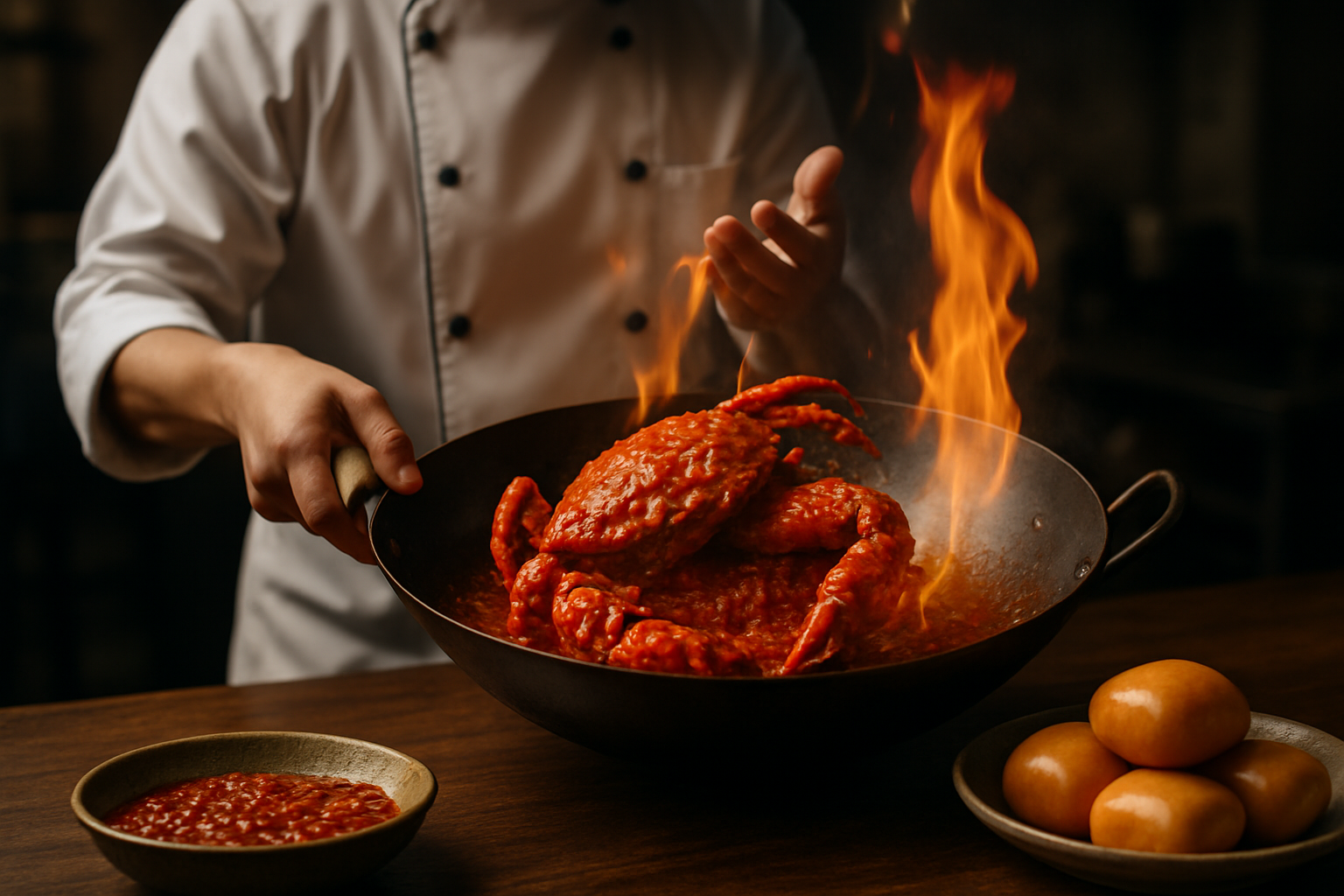Sizzling Secrets: The Art of Flambé in Modern Cuisine
Ignite your culinary passion with the dazzling spectacle of flambé. This time-honored technique, where spirits are set ablaze to infuse dishes with complex flavors, is experiencing a renaissance in contemporary kitchens. From classic desserts to innovative savory creations, flambé is captivating a new generation of food enthusiasts and chefs alike.

Beyond its culinary benefits, flambé adds an element of drama to dining experiences. The burst of flames, the sizzling sound, and the enticing aroma create a multi-sensory spectacle that turns a meal into a memorable event. In an age where diners crave experiences as much as flavors, flambé offers a perfect blend of culinary artistry and theatrical presentation.
From Classic to Contemporary: Flambé’s Evolution
Traditionally associated with desserts like Crêpes Suzette and Bananas Foster, flambé has expanded its repertoire in modern cuisine. Innovative chefs are applying this technique to savory dishes, creating flambéed steaks, seafood, and even vegetables. The versatility of flambé allows for creative flavor combinations and unexpected twists on familiar recipes.
In cocktail culture, flambé is making waves with mixologists crafting fiery concoctions that push the boundaries of traditional bartending. From smoked Old Fashioneds to flaming tiki drinks, these spirited creations offer a visual and gustatory adventure for adventurous imbibers.
The revival of flambé also aligns with the growing interest in interactive dining experiences. Restaurants are incorporating tableside flambé stations, allowing diners to witness the magic up close and even participate in the process under expert guidance.
The Science Behind the Sizzle
Understanding the science of flambé is crucial for mastering this technique. The process relies on the volatility of alcohol, which ignites at around 172°F (78°C). As the alcohol burns, it releases flavor compounds and caramelizes sugars in the dish. The brief, intense heat can also help to meld flavors and create new chemical reactions that enhance the overall taste profile.
Choosing the right alcohol is key to successful flambé. High-proof spirits like cognac, rum, or brandy are popular choices due to their ability to ignite easily and impart rich flavors. The alcohol content should be at least 40% ABV (80 proof) to ensure a proper flame.
Temperature control is another critical aspect. The pan or dish must be hot enough to vaporize the alcohol instantly, creating the dramatic flare-up. However, overheating can result in a bitter taste or even scorching of the food.
Safety First: Mastering Flambé Without Getting Burned
While flambé adds excitement to cooking, it’s essential to prioritize safety. Professional chefs and home cooks alike must follow strict guidelines to prevent accidents. Always use a long-handled lighter or match to ignite the alcohol, keeping a safe distance from the flame. Never pour alcohol directly from the bottle into a hot pan, as the flames can travel up the stream and ignite the bottle.
It’s also crucial to have proper ventilation and keep flammable materials away from the cooking area. A fire extinguisher should always be within reach, and cooks should be prepared to smother any unexpected flames quickly.
With proper precautions, flambé can be safely executed in both professional and home kitchens, allowing culinary enthusiasts to explore this exciting technique without compromising safety.
Flambé: A Gateway to Global Flavors
Flambé’s versatility makes it an excellent tool for exploring global cuisines. From French classics to Caribbean-inspired dishes, this technique can adapt to various culinary traditions. Chefs are experimenting with local spirits and ingredients to create flambé dishes that reflect regional flavors and cultural heritage.
In Asian fusion cuisine, for example, chefs might flambé dishes with sake or baijiu, adding a unique twist to traditional recipes. Latin American-inspired creations might incorporate rum or pisco, while Mediterranean-style flambés could feature ouzo or grappa.
This global approach to flambé not only expands the technique’s repertoire but also offers diners a passport to world flavors through a single, fiery spectacle.
Flambé Finesse: Tips for Mastery
- Always use room temperature alcohol for better ignition and flavor infusion.
- Tilt the pan slightly away from you when igniting to direct the flames away from your body.
- For fruit-based flambés, sprinkle sugar over the fruit before adding alcohol to enhance caramelization.
- Experiment with different spirits to discover unique flavor profiles.
- Practice with water first to perfect your pouring and ignition technique.
- Allow the flames to subside naturally for optimal flavor development.
- Consider using a chafing dish for tableside flambé presentations.
Igniting Culinary Passion
Flambé is more than just a cooking technique; it’s a gateway to culinary adventure. By mastering this art, home cooks and professional chefs alike can add a touch of drama and sophistication to their culinary repertoire. As the flames dance and flavors meld, flambé continues to captivate diners and inspire cooks to push the boundaries of taste and presentation. So, why not spark your culinary creativity and set your kitchen ablaze with the exciting world of flambé?





